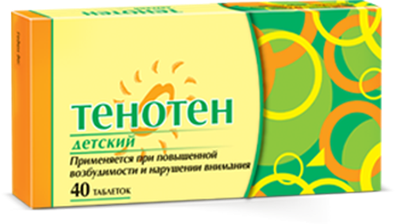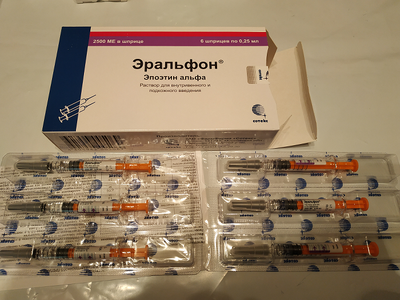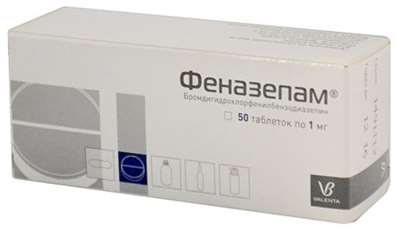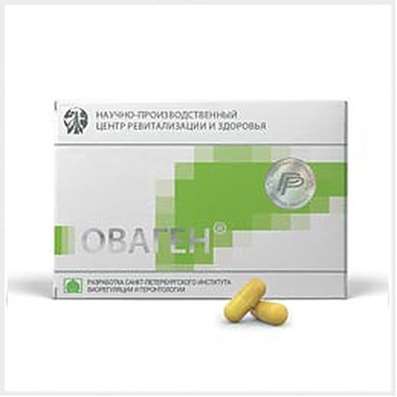Instruction for use: Utrogectan
I want this, give me price
Active substance Progesterone
ATX code G03DA04 Progesterone
Pharmacological groups
Estrogens, gestagens; Their homologues and antagonists
Nosological classification (ICD-10)
D26 Other benign neoplasms of the uterus
Fibromyoma of the uterus, Myoma, Uterine fibroids, Fibromyoma, Myoma of the uterus, Fibrrios, Meigs syndrome, Tumors of the uterus
E28 Ovarian dysfunction
Dysfunction of the sex glands, Abnormal ovarian function, Non-functioning ovaries, Primary dysfunction of the ovaries, Decreased function of the sex glands, Estrogen insufficiency
E28.9 Ovarian dysfunction, unspecified
Support of the luteal phase in the spontaneous or induced menstrual cycle, Support of the luteal phase during preparation for in vitro fertilization, Secondary hypofunction of the ovaries, Reduced function of the sex glands, Disturbance in the luteal phase of the ovarian cycle, Insufficiency of the luteal phase of the cycle, Estrogen insufficiency, Incomplete maturation of the follicle
N60.1 Diffuse cystic mastopathy
Benign cystic change in mammary glands, Cystic fibrosis mastopathy, Fibrous-cystic mastopathy, Pre-cancerous condition of mammary glands, Benign mammary gland disease, Benign breast tumor
N80 Endometriosis
Endometrioid endometriosis
N94.3 Premenstrual tension syndrome
Pronounced premenstrual syndrome, Menstrual psychosomatic disorder, Menstrual syndrome, Premenstrual tension, Premenstrual status, Premenstrual period, Premenstrual syndrome, Menstruation syndrome
N94.6 Dysmenorrhea Unspecified
Pain during menstruation, Functional disorders of the menstrual cycle, Menstrual cramps, Emmeniopathy, Pain during menstruation, Painful menstrual irregularities, algomenorrhea, algomenoreya, Pain smooth muscle spasm, Pain spasm of smooth muscles (renal and biliary colic, intestinal spasms, dysmenorrhea), Pain spasm of smooth muscles of internal organs (kidney and biliary colic, intestinal spasms, dysmenorrhea), Disalgomenoreya, dysmenorrhea, Dysmenorrhea (essential) (Exfoliative), menstrual disorder, menstruation painful, metrorrhagia, Violation of the menstrual cycle, Menstrual irregularities, Prolaktinzavisimoe menstrual disorders, Prolaktinzavisimoe menstrual dysfunction, Pain spasm of smooth muscles of internal organs, Spasmodic dysmenorrhea, Primary disalgomenoreya
N94.8 Other specified conditions associated with female genital organs and the menstrual cycle
Menstruation disorder, Amenorrhea due to prolonged courses of antibiotic therapy, Prolactin-dependent disorder of the menstrual cycle, Prolactin-dependent disorder of menstrual function
N95.1 menopausal and menopausal status of women
Atrophy of the mucosa of the lower genital tract, caused by estrogen deficiency; Vaginal dryness; Autonomic dysfunction in women; gipoestrogeniya state; Deficiency of estrogen in menopausal women; Degenerative changes of the mucous membrane in the menopause; Natural menopause; an intact uterus; climacteric; Menopause women; Menopause in women; menopausal depression; Climacteric ovarian dysfunction; Menopause; Climacteric neurosis; Menopause; Menopausal symptoms complicated psychovegetative; Climacteric syndrome; Climacteric vegetative disorders; Climacteric psychosomatic disorder; menopausal disorders; Menopausal disorders in women; menopausal condition; Climacteric vascular disorders; Menopause; Menopausal vasomotor symptoms; menopausal period; Lack of estrogen; Feeling the heat; Pathological menopause; perimenopause; menopause; postmenopausal; Premature menopause; premenopauznom period; tides; hot flashes; flushing in the Meno and postmenopausal; Hot flashes / hot flashes in menopause; Heart attack during menopause; Early menopause in women; Disorders of menopause; climacteric syndrome; Vascular complications of menopause; Physiological menopause; Estrogendefitsitnye state; premature Menopause
N95.9 Menopausal and perimenopausal disorders, unspecified
Postmenopause, Atrophy of the vulva, Climacteric syndrome, Postmenopausal period, Premenopausal period, Menopausal Symptom
N96 Habitual miscarriage
Miscarriage habitual, Habitual abortion, Habitual miscarriage
N97.0 Female infertility associated with lack of ovulation
Anovulation, Stimulation of ovulation, Stimulation of a single dominant follicle, Stimulation of the growth of multiple follicles, Anovulatory dysfunction of the ovaries, Anovulatory cycle, Induction of ovulation in the treatment of infertility, Infringement of an ovulation, Anovulatory infertility, Infertility due to anovulation or inadequate maturation of the follicle, The hormone-dependent pathology of the reproductive system, Anovulation chronic, Anovulatory cycles, Infertility associated with anovulation, Incomplete maturation of the follicle
O20.0 Threatened abortion
Abortion threatening, threatening miscarriage, Spastic conditions with the risk of abortion, Threatened miscarriage in the first trimester of pregnancy, The threat of miscarriage, threatened abortion, The threat of miscarriage, Threatened spontaneous miscarriage
O42.9 Premature rupture of membranes, unspecified
Premature outflow of amniotic fluid, Premature discharge of amniotic fluid, Premature rupture of the bladder
O60 Premature birth
Pregnancy prematurity, The birth premature, Preterm labor pains, Premature contractions prehospital, Immobilization of the uterus before the cesarean section, Immobilization of the uterus, Acute tocolysis, Threatening premature labor, Premature discharge of water, Preventing premature births, The threat of premature birth
Z31.1 Artificial insemination
Fence of egg, ICSI (Intra Cytoplasmic Sperm Injection), Controlled ovarian stimulation, Controlled superovulation, Controlled superovulation in artificial insemination, Treatment of insemination, Fertilization artificial, Premature ovulation, The IVF program, The program of in vitro fertilization, Superovulation
Z31.2 In Vitro Fertilization
Support of the luteal phase in the spontaneous or induced menstrual cycle, Support of the luteal phase during preparation for in vitro fertilization, Reproductive technologies, Superovulation, ECO, In Vitro Fertilization, Controlled superovulation in in vitro fertilization
Composition
Capsules 1 caps.
active substance:
Progesterone (natural micronized) 100 mg / 200 mg
Auxiliary substances: sunflower oil - 149/298 mg; Lecithin soy - 1/2 mg
The composition of the capsule: gelatin - 76.88 / 153.76 mg; Glycerin - 31.45 / 62.9 mg; Titanium dioxide - 1.67 / 3.34 mg
Description of dosage form
Capsules: round (for a dosage of 100 mg), oval (for a dosage of 200 mg), soft shiny gelatinous, yellowish color, containing an oily whitish homogeneous suspension (without visible phase separation).
pharmachologic effect
The pharmacological action is gestagenic.
Pharmacodynamics
Gestagen, the hormone of the yellow body. By binding to receptors on the surface of cells of target organs, it penetrates into the nucleus, where, by activating DNA (deoxyribonucleic acid), it stimulates the synthesis of RNA (ribonucleic acid). Promotes the transition of the mucous membrane of the uterus from the phase of proliferation caused by the follicular hormone, into the secretory phase, and after fertilization - into a state necessary for the development of a fertilized egg. Reduces the excitability and contractility of the muscles of the uterus and fallopian tubes, stimulates the development of the end elements of the breast.
Stimulating proteinolipase, increases fat stores; Increases the utilization of glucose; Increasing the concentration of basal and stimulated insulin, promotes the accumulation of glycogen in the liver; Increases the production of gonadotropic hormones of the pituitary gland; Reduces azotemia, increases the excretion of nitrogen in the urine. Activates the growth of the secretory department of the mammary glands and induces lactation. Promotes the formation of normal endometrium.
Pharmacokinetics
Ingestion
Suction. Micronized progesterone is absorbed from the digestive tract. The concentration of progesterone in the blood plasma gradually rises during the first hour, Cmax is noted 1-3 hours after admission. The concentration of progesterone in the blood plasma increases from 0.13 to 4.25 ng / ml after 1 hour, to 11.75 ng / ml after 2 hours and is 8.37 ng / ml after 3 h, 2 ng / ml after 6 h And 1.64 ng / ml 8 hours after administration.
Metabolism. The main metabolites that are detected in the blood plasma are 20-alpha-hydroxy-delta-4-alpha-pregnanolone and 5-alpha-dihydroprogesterone.
Excretion. It is excreted in the urine in the form of metabolites, 95% of them are glucuron-conjugated metabolites, mainly 3-alpha, 5-beta-pregnanediol (pregnannione). These metabolites, which are determined in blood plasma and urine, are similar to substances formed during the physiological secretion of the yellow body.
With vaginal administration
Suction. Absorption occurs rapidly, progesterone accumulates in the uterus, a high level of progesterone in the blood plasma is observed after 1 hour after administration. Tmax progesterone in blood plasma - 2-6 h after administration. When the drug is administered 100 mg twice a day, the average concentration remains at 9.7 ng / ml for 24 hours.
When administered at doses of more than 200 mg / day, the progesterone concentration corresponds to the I trimester of pregnancy.
Metabolism. Metabolized with the formation of predominantly 3-alpha, 5-beta-pregnanediol. The level of 5-beta-pregnanolone in plasma does not increase.
Excretion. It is excreted in the urine in the form of metabolites, the main part is 3-alpha, 5-beta-pregnanediol (pregnannione). This is confirmed by a constant increase in its concentration (Cmax 142 ng / ml after 6 hours).
Indications of the drug Utrogectan®
Progesterone deficiency in women.
Inside:
Infertility due to luteal insufficiency;
premenstrual syndrome;
Disorders of the menstrual cycle due to a violation of ovulation or anovulation;
Fibrocystic mastopathy;
Premenopause;
Hormone replacement therapy (HRT) peri- and postmenopausal (in combination with estrogen preparations).
Intravaginal:
Hormone replacement therapy in case of progesterone deficiency with non-functioning (absent) ovaries (donation of eggs);
Prevention (prevention) of preterm delivery in women at risk (with cervical shortening and / or the presence of anamnestic data of premature birth and / or premature rupture of membranes);
Support of the luteal phase during preparation for in vitro fertilization;
Support of the luteal phase in the spontaneous or induced menstrual cycle;
Premature menopause;
Replacement hormone therapy (in combination with estrogenic drugs);
Infertility due to luteal insufficiency;
Threatening abortion or the prevention of habitual abortion due to insufficient progesterone.
Contraindications
Hypersensitivity to the components of the drug;
Deep vein thrombosis, thrombophlebitis, thromboembolic disorders (pulmonary embolism, myocardial infarction, stroke), intracranial hemorrhage or the presence of these conditions / diseases in the anamnesis;
Bleeding from the vagina of an unknown origin;
Incomplete abortion;
Porphyria;
Established or suspected malignant neoplasms of the mammary glands and genital organs;
When ingested - severe liver disease (including cholestatic jaundice, hepatitis, Dubin-Johnson syndrome, rotor, malignant liver tumors) at present or anamnesis.
With caution: SSS; arterial hypertension; Chronic renal failure; diabetes; bronchial asthma; epilepsy; migraine; depression; Hyperlipoproteinemia; Lactation period.
pregnancy and lactation
At pregnancy the preparation can be applied only intravaginally.
The drug should be used with caution in the II and III trimesters of pregnancy because of the risk of developing cholestasis.
Progesterone penetrates into breast milk, so the use of the drug is contraindicated during breastfeeding.
Side effects
The following undesirable phenomena noted with the oral route of application are distributed according to the frequency of occurrence according to the following gradation: often> 1/100, <1/10; Infrequently> 1/1000, <1/100; Rarely> 1/10000, <1/1000; Very rarely <1/10000.
From the genitals and the breast: often - menstrual irregularities, amenorrhea, acyclic bleeding; Infrequently - mastodynia.
From the side of the psyche: very rarely - depression.
From the nervous system: often - headache; Infrequently - drowsiness, transient dizziness.
From the digestive tract: often - bloating; Infrequently - vomiting, diarrhea, constipation; Rarely - nausea.
From the side of the liver and bile ducts: infrequently - cholestatic jaundice.
From the immune system: very rarely - hives.
From the skin and subcutaneous tissues: infrequently - itching, acne; Very rarely - chloasma.
Drowsiness, transient dizziness is possible, as a rule, 1-3 hours after taking the drug. These side effects can be reduced by lowering the dose, applying the drug at bedtime or switching to the vaginal route of administration.
These undesirable effects are usually the first signs of an overdose. Drowsiness and / or transient dizziness are observed, in particular, in the case of concomitant hypoestrogenia. Reducing the dose or restoring a higher estrogenation immediately eliminates these phenomena without reducing the therapeutic effect of progesterone.
If treatment begins too early (in the first half of the menstrual cycle, especially before the 15th day), there may be shortening of the menstrual cycle or acyclic bleeding.
Recorded changes in the menstrual cycle, amenorrhea, or acyclic bleeding are common to all progestogens.
Application in clinical practice
In the post-marketing application, the following adverse events were noted with oral administration of progesterone: insomnia; premenstrual syndrome; Tension in the mammary glands; Vaginal discharge; Pain in the joints; Hyperthermia; Increased sweating at night; Fluid retention; Change in body weight; Acute pancreatitis; Alopecia, hirsutism; Changes in libido; Thrombosis and thromboembolic complications (with HRT in combination with estrogen-containing drugs); Increased blood pressure (arterial pressure).
The composition of the drug includes soy lecithin, which can cause hypersensitivity reactions (hives and anaphylactic shock).
Vaginal application. It reported some cases of local intolerance reactions of components of the drug (in particular soy lecithin) as a hyperemia of the vaginal mucosa, burning, itching, oily secretions.
Systemic adverse effects of the intravaginal drug application at the recommended doses, particularly drowsiness and dizziness (observed upon oral administration of the drug) were not observed.
Interaction
Oral administration
Progesterone increases the effects of diuretics, antihypertensive drugs, immunosuppressants, anticoagulants. Reduces the lactogenic effect of oxytocin. The simultaneous use of drugs, CYP3A4 inducers microsomal enzymes of the liver, such as barbiturates, antiepileptics (phenytoin), rifampicin, phenylbutazone, spironolactone, griseofulvine, accompanied by acceleration of progesterone metabolism in the liver.
Simultaneous administration of progesterone with some antibiotics (penicillins, tetracyclines) may reduce its effectiveness due to violation of enterohepatic recirculation of sex hormones due to changes in the intestinal microflora.
The degree of severity of these interactions can vary in different patients, so the prognosis of the clinical effects of these interactions is difficult. Ketoconazole may increase the bioavailability of progesterone.
Progesterone can increase the concentration of ketoconazole and cyclosporin, reduce the effectiveness of bromocriptine, cause a decrease in glucose tolerance, thereby increasing the need for insulin or other hypoglycemic drugs in patients with diabetes mellitus.
Bioavailability of progesterone can be reduced in smokers and excessive use of alcohol.
Intravaginal application
The interaction of progesterone with other drugs for intravaginal application was not evaluated. It should avoid the simultaneous use of other drugs used intravaginally, to avoid disruption of the release and absorption of progesterone.
Dosing and Administration
The duration of treatment is determined by the nature and characteristics of the disease.
Inside, washing down with water.
In most cases, when progesterone is inadequate, the daily dose of Utrogectan® is 200-300 mg divided into 2 divided doses (morning and evening).
If the luteal phase is deficient (premenstrual syndrome, fibro-cystic mastopathy, dysmenorrhea, premenopause), the daily dose is 200 or 400 mg taken within 10 days (usually from the 17th to the 26th day of the cycle).
With HRT in the perimenopause against the background of taking estrogens, the drug Utrogectan® is used at 200 mg per day for 12 days.
With HRT in postmenopausal continuous mode, the drug Utrogectan® is used at a dose of 100-200 mg from the first day of taking estrogens. The dose is selected individually.
Intravaginal, deep in the vagina.
Prevention (prevention) of preterm delivery in women at risk (with shortening of the cervix and / or the presence of anamnestic data of premature birth and / or premature rupture of the membranes): the usual dose is 200 mg at bedtime, from 22 to 34 weeks Pregnancy.
Complete absence of progesterone in women with non-functioning (absent) ovaries (egg donation): against estrogen therapy at 200 mg / day on the 13th and 14th days of the cycle, then 100 mg twice a day from 15th to 25th The day of the cycle, from the 26th day, and in the case of pregnancy determination, the dose increases by 100 mg / day every week, reaching a maximum of 600 mg / day, divided into 3 doses. This dosage can be applied for 60 days.
Support of the luteal phase during the in vitro fertilization cycle: it is recommended to take 200 to 600 mg / day, starting from the day of injection of HG during the I and II trimester of pregnancy.
Support of the luteal phase in the spontaneous or induced menstrual cycle, infertility associated with a violation of the function of the yellow body: it is recommended to take 200-300 mg / day, starting from the 17th day of the cycle for 10 days, in case of delay in menstruation and pregnancy diagnosis treatment should Be continued.
In cases of threatened abortion or in order to prevent habitual abortions that occur against the background of progesterone deficiency: 200-400 mg / day in 2 divided doses in the first and second trimesters of pregnancy.
Overdose
Symptoms: drowsiness, transient dizziness, euphoria, shortening of the menstrual cycle, dysmenorrhea.
In some patients, the average therapeutic dose may be excessive because of the available or occurring unstable endogenous secretion of progesterone, a particular sensitivity to the drug, or a too low concentration of estradiol.
Treatment: in case of occurrence of drowsiness or dizziness it is necessary to reduce the daily dose or to prescribe the drug before bedtime for 10 days of the menstrual cycle; In the case of a shortening of the menstrual cycle or spotting bloody discharge, it is recommended that the treatment be started on a later day of the cycle (for example, on the 19th day instead of the 17th); In perimenopause and with HRT in postmenopause it is necessary to make sure that the concentration of estradiol is optimal.
In case of an overdose, if necessary, symptomatic treatment is performed.
special instructions
The drug Utrogectan® can not be used for contraception.
The drug should not be taken with food; Eating increases the bioavailability of progesterone.
The drug Utrogectan® should be taken with caution in patients with diseases and conditions that can worsen with fluid retention (hypertension, cardiovascular diseases, chronic renal failure, epilepsy, migraine, bronchial asthma); In patients with diabetes mellitus; Violations of liver function of mild and moderate severity; Photosensitivity.
It is necessary to observe patients with depression in the anamnesis, and in case of development of severe depression it is necessary to cancel the drug.
Patients with concomitant cardiovascular diseases or their history should also be observed periodically by a physician.
The use of the drug Utrogectan ® after the first trimester of pregnancy can cause the development of cholestasis.
Prolonged treatment with progesterone requires regular physical examinations (including liver function tests); Treatment should be canceled in case of deviations from normal indicators of functional liver or cholestatic jaundice.
When using progesterone, it is possible to reduce glucose tolerance and increase the need for insulin and other hypoglycemic drugs in patients with diabetes mellitus.
In the case of amenorrhea in the treatment process, pregnancy should be excluded.
If the treatment starts too early at the beginning of the menstrual cycle, especially before the 15th day of the cycle, cycle shortening and / or acyclic bleeding may occur. In the case of acyclic bleeding, the drug should not be used until the cause is determined, including the histological examination of the endometrium.
If there is a history of chloasma or a tendency to develop it, patients are advised to avoid UV irradiation.
More than 50% of cases of spontaneous abortions in the early stages of pregnancy are due to genetic disorders. In addition, the cause of spontaneous abortions in the early stages of pregnancy can be infectious processes and mechanical damage. The use of the drug Utrogectan® in these cases can only lead to a delay in the rejection and evacuation of the non-viable fetal egg.
Use of the drug Utrogectan® in order to prevent a threatening abortion is justified only in cases of insufficient progesterone.
The composition of the drug Utrogectan® includes soy lecithin, which can cause hypersensitivity reactions (hives and anaphylactic shock).
When carrying out HRT with estrogens during the period of perimenopause, the use of the drug Utrogectan® is recommended for no less than 12 days of the menstrual cycle.
With the continuous mode of HRT in postmenopause, the use of the drug is recommended from the first day of taking estrogens.
When HRT is performed, the risk of developing VTE (deep vein thrombosis or pulmonary embolism) increases, the risk of ischemic stroke, CHD
Because of the risk of developing thromboembolic complications, the drug should be discontinued in case of: visual disturbances such as loss of vision, exophthalmos, double vision, vascular lesions of the retina; migraine; VTE or thrombotic complications, regardless of their location.
If there is a history of thrombophlebitis, the patient should be carefully monitored.
When using the drug Utrogectan® with estrogen-containing preparations, it is necessary to refer to instructions for their use regarding the risks of VTE.
The results of the Clinical Study of the Women's Health Initiative Study (WHI) indicate a slight increase in the risk of breast cancer in the long-term, more than 5 years, combined use of estrogen-containing drugs with synthetic gestagens. It is not known whether there is an increased risk of developing breast cancer in postmenopausal women with HRT using estrogen-containing drugs in combination with progesterone.
The results of the WHI study also revealed an increased risk of developing dementia at the onset of HRT over the age of 65 years.
Before the onset of HRT and regularly during the procedure, a woman should be examined to identify contraindications to her. In the presence of clinical indications, a breast examination and gynecological examination should be performed. The use of progesterone may affect the results of some laboratory tests, including indicators of liver function, thyroid function; Coagulation parameters; Concentration of pregnanediol.
Impact on the ability to manage vehicles and mechanisms. When using the drug orally, care must be taken when driving vehicles and engaging in other potentially hazardous activities requiring increased attention and speed of psychomotor reactions.
Form of issue
Capsules, 100 mg. In a blister of PVC (polyvinyl chloride) / aluminum foil or PVC / PVDC (polyvinylidene chloride) / aluminum foil, 14 pcs. 2 bl. In a cardboard box (28 caps in a consumer package).
Capsules, 200 mg. In a blister of PVC / aluminum foil or PVC / PVDC / aluminum foil, 7 pcs. 2 bl. In a cardboard package (14 caps in a consumer package).
Terms of leave from pharmacies
On prescription.
Storage Conditions
At a temperature not exceeding 25 ° C.
Keep out of the reach of children.
Shelf life
3 years.
Do not use after the expiry date printed on the package.

 Cart
Cart





